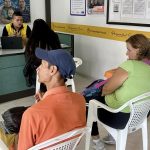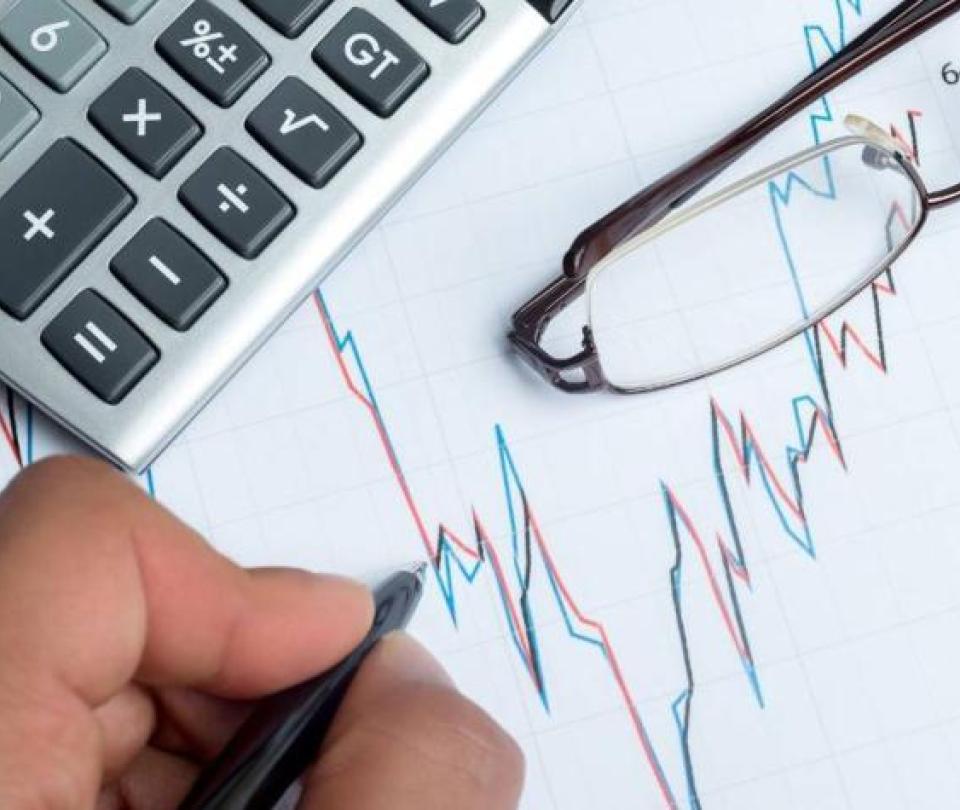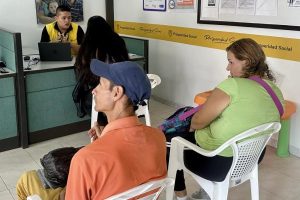Since the pandemic, and after the loss of investment grade that Colombia experienced in 2021, the country’s risk rating has been hit.
This Thursday, February 23, within the framework of the ‘2023 Economic Outlook Meeting’, organized by Camacol, the co-director of the Bank of the Republic, Jaime Jaramillo Vallejoassured that throughout February the country risk of Colombia “shot up even more.”
(You may be interested in: Reasons why companies are postponing investments, according to Andi).
This is evidenced by the credit default swapsor CDS, financial derivatives that function as a thermometer of how investors perceive a country’s credit default risk.
“We economists look at the external perception of risk with credit default swaps, they are financial operations that are basically an investor’s bet on the probability that a country will not pay. The higher the credit default swap, the higher the perception from outside that we can reach a default on Colombia’s debtJaramillo explained.
(More: ‘The labor reform must have good sense, balance and balance’).
According to the co-director of the Issuer, in mid-2021 Colombia was perceived with a trend very close to that of Mexico, but after losing the investment grade it was equal to that of Brazil, which used to be lower, “and then, little by little, we have been moving away from the trend and in February the credit default swap has shot up even more”, he assured.
According to Jaramillo, The importance of the CDS is that this defines the interest rate that Colombia, the Government and the private sector are charged on their external credits.
(We recommend: Bancolombia put a ceiling of 14.15% on the VIS housing rate).
A report published yesterday by ‘Bloomberg’ also detailed that Colombia’s assets fell throughout the month due to the concern generated by the reforms promoted by the Government of Gustavo Petro, such as the bill to modify the health systemand also his promises to reduce the role of pension fund managers and signed a decree that will allow him to reduce energy rates.
According to the news agency, this translated into “a quick sell-off that sent the country’s currency, bonds and stocks tumbling sharply as investors scrutinized how far the leftist president would push his reforms”.
The costs of insuring against credit default, or the credit default swaps, increased this month more than those of any of its Latin American peers, the agency also indicated. And he pointed out that peso-denominated debt, which depends to a large extent on foreign buyers, has been the one that has registered the biggest drop in emerging markets.
(Keep reading: Financial and accounting software is renewed for companies).
According to Juan David Ballén, director of Analysis and Strategy at the brokerage firm Casa de Bolsa, it must be taken into account that CDS are a dynamic indicator, they change every day and have a global correlation, because when they increase it happens in all countries, and the same happens when they decrease.
“The first month of the year was somewhat calm. However, the indicator remains above that of other countries. This additional risk premium that has been present since last year remains over time”, Mentioned Ballen.
(Also: The factors that would drive investors away from Colombia).
For the expert, there are some global factors that are causing the risk premium to rise, the lower global liquidity, such as the increase in rates or that central banks are no longer buying financial assets.
“There is a phenomenon that has also influenced, the famous internal factor, since uncertainty has recently arisen in relation to the announcements of the Government, related to the pension, the health reforms, the change in the rules of the game such as the non-increase of tolls or take control of the regulation of public services. All this alters the panorama somewhat, generates some nervousness, and all this is reflected in these types of indicators.Ballen said.
The expert also mentioned that Colombia’s debt balance is “very high”, and that fiscal decisions after taxes and oil income point to other priorities.
Market perceives greater challenges ahead
Within the framework of the Camacol perspectives event, Juana Téllez, BBVA’s chief economist for Colombia, and Camilo Pérez, director of economic research at Banco de Bogotá, They highlighted some risks that the country has.
“We believe that the interest rates of the deposit market are going to fall more slowly than they rose… also that the exchange rate will continue to be above $5,000, also due to political uncertainty, there are between five and ten reforms in the pipeline. panorama”, assured Pérez, who reiterated that the economy is facing a scenario of uncertainty and concerns that may affect the vision of investors.
For his part, Téllez stressed that the slowdown expected for the economy in 2023 will be tied to less job creation. “The prospect of a labor reform that we still do not know about also generates uncertainty”, indicated the economist.
BRIEFCASE



![[Img #74683]](https://thelatestnews.world/wp-content/uploads/2024/12/The-main-mistakes-to-avoid-when-betting-on-electronic-sports-150x150.jpg)











